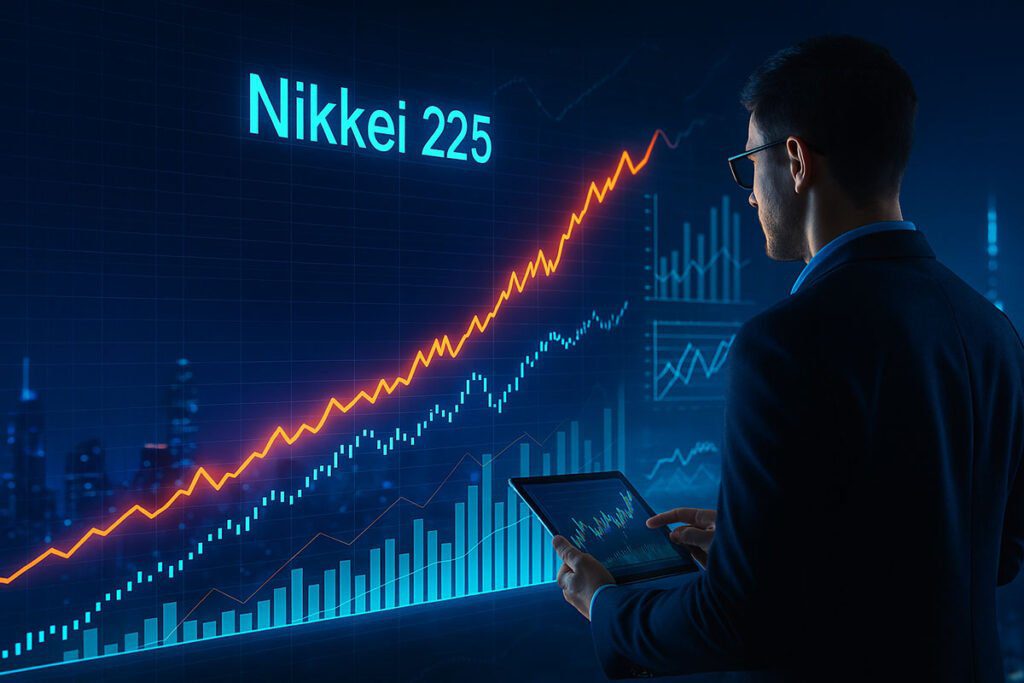In the evolving world of financial news and investment research, Fintechzoom.com has emerged as a go-to platform for real-time market data, economic analysis, and investment trends. Among the numerous indices it covers, the Nikkei 225 stands out as a key benchmark for tracking the Japanese stock market. Pairing Fintechzoom’s user-friendly tools with Japan’s premier index gives investors a powerful lens through which to evaluate economic conditions, stock performance, and global financial sentiment.
This article explores the relationship between Fintechzoom.com and the Nikkei 225, breaking down how to use the platform for tracking the index and why the Nikkei 225 is essential for investors looking to broaden their global portfolios.
What Is the Nikkei 225?
The Nikkei 225, officially called the Nikkei Stock Average, is Japan’s oldest and most well-known stock market index. Launched in 1950 and calculated by the Nihon Keizai Shimbun (Nikkei Inc.), the index tracks 225 of the largest publicly traded companies listed on the Tokyo Stock Exchange (TSE).
Unlike the S&P 500 or FTSE 100, which are weighted by market capitalization, the Nikkei 225 is price-weighted. This means companies with higher stock prices have more influence over the index, regardless of their total market value. This design can create distortions but also offers unique insights into Japan’s equity market behavior.
Some of the prominent companies included in the Nikkei 225 are:
- Toyota Motor Corporation
- Sony Group Corporation
- Fast Retailing (operator of UNIQLO)
- SoftBank Group
- Honda Motor Co.
These firms represent a diverse cross-section of Japan’s economy, from manufacturing and technology to consumer goods and telecommunications.
Why the Nikkei 225 Matters to Investors
1. Economic Insight
The Nikkei 225 is often seen as a real-time barometer for Japan’s economic health. Fluctuations in the index reflect investor sentiment, consumer behavior, and corporate earnings in one of the world’s largest economies.
2. Global Market Impact
Since Japan plays a crucial role in international trade and technology, the performance of the Nikkei 225 can affect other markets—especially across Asia. The index’s early morning trading hours (Japan Standard Time) make it one of the first global markets to react to geopolitical news or economic data, giving it a ripple effect on other financial centers.
3. Investment Opportunity
For international investors, the Nikkei 225 offers exposure to Japanese equities, often through ETFs, mutual funds, or direct investment in index-linked products. Investors track the index to measure returns, benchmark portfolios, or identify stock-specific opportunities.
4. Currency Sensitivity
The index’s value often moves in tandem with currency changes, particularly the Japanese Yen (JPY). A stronger Yen typically affects exporters negatively, while a weaker Yen can boost international competitiveness—impacting earnings for many Nikkei-listed companies.
How to Use Fintechzoom.com to Track the Nikkei 225
Fintechzoom.com simplifies the process of monitoring complex financial instruments like the Nikkei 225. Here’s how you can navigate the platform for actionable insights:
1. Real-Time Data Access
Visit the homepage and use the search bar to enter “Nikkei 225” or the ticker symbols ^N225 or .N225. You’ll land on the index’s dedicated page where live or near real-time pricing, change percentages, and daily highs/lows are displayed.
2. Interactive Charts and Technical Analysis
The platform provides interactive charting tools with adjustable time frames—daily, weekly, monthly, or yearly. Use overlays such as moving averages, MACD, RSI, and Bollinger Bands to conduct in-depth technical analysis.
3. Historical Performance and Trends
Click on the “Historical Data” section to download past price movements. Analyzing long-term trends helps investors anticipate cyclical patterns or identify historical support/resistance zones.
4. Company Profiles and Sector Breakdown
Fintechzoom.com also offers background on each company in the index. Clicking through the “Components” or “Constituents” tab reveals financials, earnings reports, and news updates for individual firms.
5. Market News and Commentary
The Nikkei 225 index page includes aggregated news from reliable financial sources. These articles cover topics like the Bank of Japan’s monetary policy, inflation data, corporate earnings, and global market trends that could influence index performance.
6. Economic Calendar Integration
The platform’s economic calendar includes Japanese data releases such as GDP growth, interest rate announcements, employment numbers, and industrial production—all of which can move the Nikkei 225.
7. Comparison Tools
Use Fintechzoom to compare the Nikkei 225 with indices like the S&P 500, Dow Jones, or FTSE 100. This contextual analysis helps gauge Japan’s market performance relative to other global economies.
Real-World Applications for Different Investors
- Day Traders can use Fintechzoom’s live charts and technical indicators to make quick decisions based on short-term patterns.
- Long-term Investors gain insights from historical data, macroeconomic news, and sector trends within the Nikkei 225.
- Portfolio Managers use the index as a benchmark for Japan-focused investment funds or ETFs like iShares MSCI Japan ETF (EWJ) or MAXIS Nikkei 225 ETF.
Demographic & Financial Relevance
The average investor interested in the Nikkei 225 through platforms like Fintechzoom.com ranges between 30 to 55 years old, often with intermediate to advanced financial literacy. While Fintechzoom does not disclose user income, many visitors manage portfolios valued between $50,000 to over $1 million, depending on investment scope.
As for the platform itself, Fintechzoom.com is a privately held entity. Specific net worth figures aren’t publicly listed, but as of 2025, the site ranks among the top 100 financial websites globally, hosting millions of visits per month. It functions primarily through affiliate partnerships, advertising, and premium analytical tools.
Final Thoughts: Smart Investing with Fintechzoom and the Nikkei 225
Combining Fintechzoom.com’s data-driven interface with the time-tested structure of the Nikkei 225 empowers investors with both real-time updates and historical context. Whether you’re tracking tech giants like Sony or watching export-driven trends via Toyota, the index paints a vivid picture of Japan’s economic rhythm.
For anyone aiming to diversify, stay globally aware, or simply understand Japan’s role in the financial ecosystem, this pairing offers both accessibility and insight. Just remember—market data is a tool, not a guarantee. Always pair platform insights with independent research and consult a financial advisor before making high-stakes investment decisions.







/2025/07/Julia-Benson2.png)

